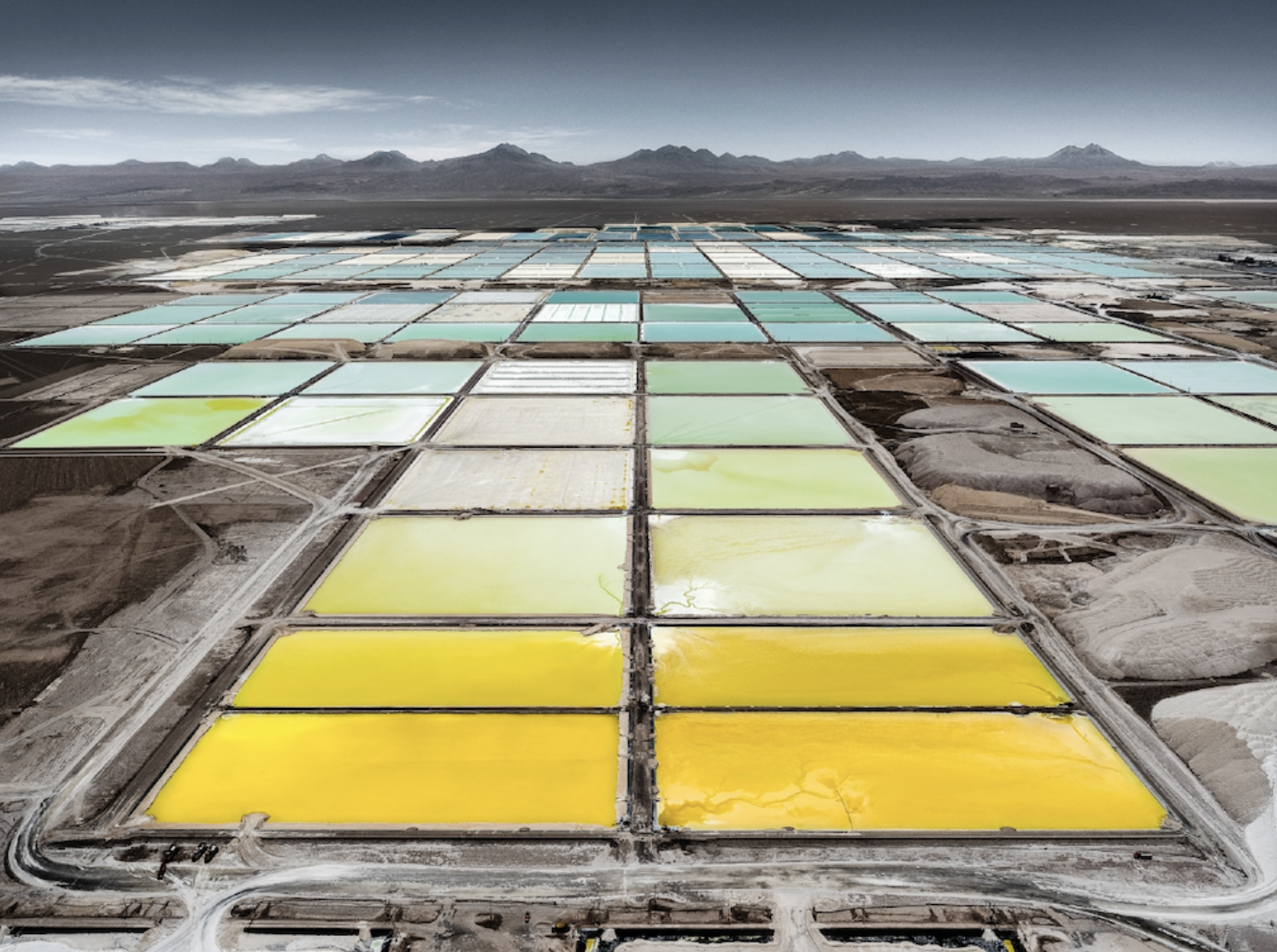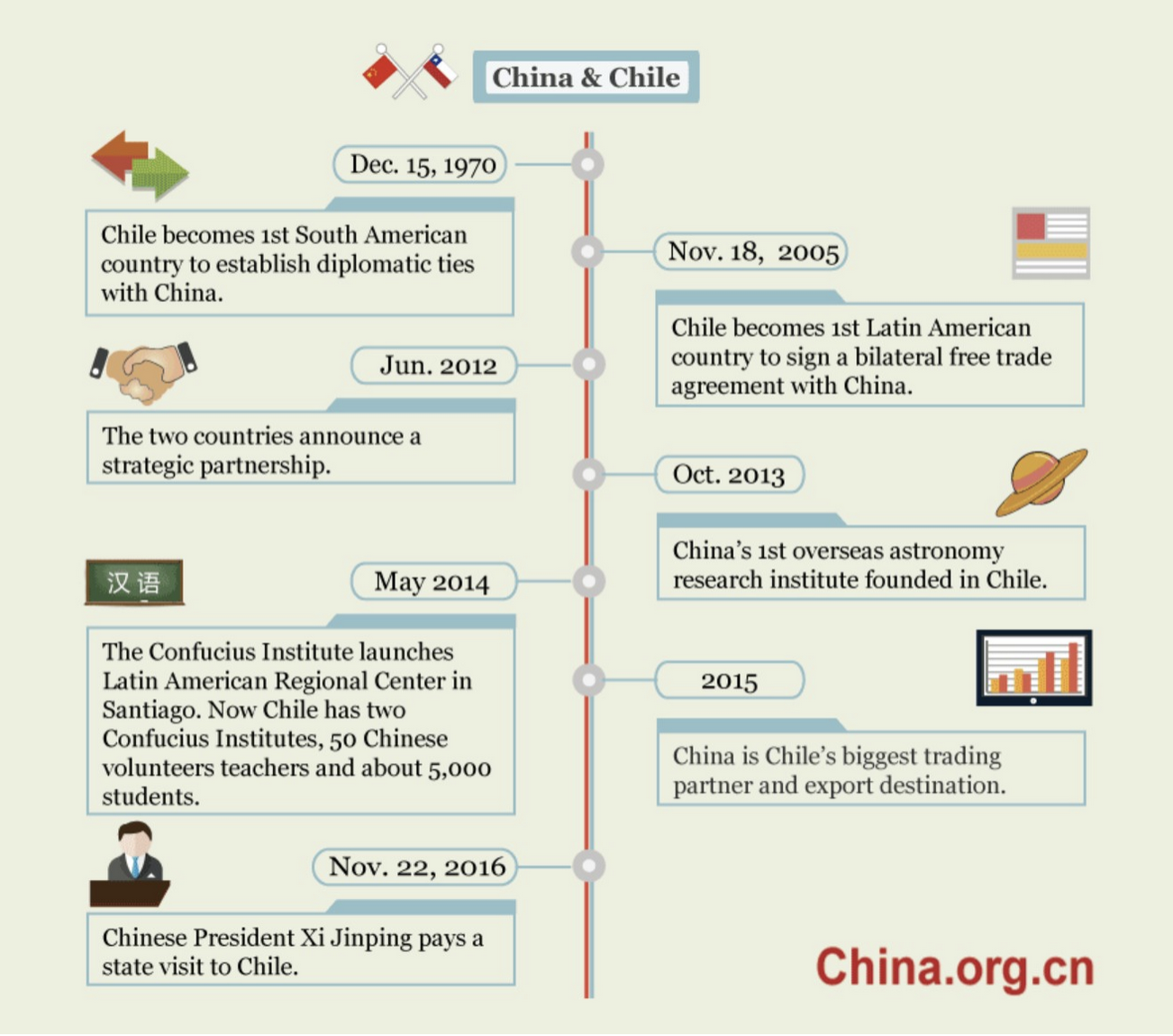Extraction to Influence: China in Chile's Lithium Mining
Navigating the Lithium Landscape between Chile and China in the Era of Renewable Energy Transition
Hideko Mitani Shen
April 1, 2024
Introduction
In the shadow of the global race for clean energy, a dramatic interplay unfolds in Latin America between Chile and China, weaving a tale of ambition, resources, environmental stewardship, and geopolitics. At the heart of this saga lies lithium, dubbed "white gold," coveted for its pivotal role in the renewable energy revolution.
As China steps boldly onto the global stage with its Belt and Road Initiative (BRI), its industrial and technological ambitions intertwine with Chile's rich landscapes and mineral wealth but also Chiles’ national pushbacks from the new Gabriel Boric's progressive government. But what does this mean for the fabric of Chilean society, its environment, and its position in the world? How does China's insatiable appetite for lithium influence the dynamics of this partnership, and what implications does it hold for the global quest for clean energy?
This storymap looks into the layers of this intricate relationship, exploring how the thirst for lithium is reshaping Chile's landscapes, economy, and future, while positioning China as a key player in the global green energy transition. Yet, as the gears of development grind, questions loom large about sustainability, equity, and the true cost of the clean energy dream for both Chile and China.
Lithium: The “White Gold,” a Key Player in the Transition to Renewable Energy
China's ascent to prominence in lithium battery technology and manufacturing hinges not only on its domestic innovations but also on its strategic partnerships with lithium-rich countries like Chile. As the world's largest manufacturer of lithium-ion batteries, exemplified by the success of Contemporary Amperex Technology Co., Limited (CATL), China has solidified its position as a leader in the global EV and energy storage markets. However, sustaining this leadership requires a steady supply of lithium, a critical component in battery production. China's strategic focus on securing upstream lithium supplies through partnerships with Chilean mining firms underscores its commitment to maintaining its manufacturing ascendancy and supporting its goal of dominating the green technology sector. Without access to lithium from countries like Chile, China's position as an EV leader and ion producer could face significant challenges.
As the world races towards clean energy, spurred by warnings from climate scientists that surpassing a 1.5 degrees Celsius increase in global warming could lock in irreversible climate impacts, lithium emerges as a pivotal player in the renewable energy arena. This "white gold" stands out for its unique properties: it's the lightest metal and the least dense solid, boasting exceptional conductivity for heat and electricity. These traits make it indispensable for lithium-ion batteries, which now power everything from smartphones to electric vehicles (EVs), thanks to their superior energy density and longevity.
Lithium's promise to drive the shift away from fossil fuels, particularly in powering EVs and storing wind and solar energy, heralds it as a revolutionary force in the clean energy transition. However, embracing lithium as a panacea without acknowledging its drawbacks risks oversimplifying the narrative. The environmental toll of lithium mining, its energy-intensive extraction process, and the challenges in recycling batteries underline the mineral's complex impact on our planet.
As demand for lithium surges, the quest to understand and mitigate its environmental footprint becomes more urgent. Developing new technologies and approaches to lithium extraction and use is crucial, aiming for methods that both harness its potential to reduce carbon emissions and minimize harm to ecosystems and communities. The journey towards truly clean energy demands a nuanced view of lithium, recognizing both its unparalleled benefits and the significant challenges it poses.
Chile: A case study of China-Chile relations through the lens of the mining industry
Since 2010, China has secured its role as Chile's principal trading ally, with a significant leap in 2021, when it accounted for 38.4% of Chile's exports. Remarkably, 83.9% of these exports to China stemmed from the mining sector, amounting to US$22 billion—a substantial 48.4% increase from the previous year. However, sustaining this leadership requires a steady supply of lithium, a critical component in battery production. China's strategic focus on securing upstream lithium supplies through partnerships with Chilean mining firms underscores its commitment to maintaining its manufacturing ascendancy and supporting its goal of dominating the green technology sector. Without access to lithium from countries like Chile, China's position as an EV leader and ion producer could face significant challenges. This surge underscores the deepening economic ties between the two nations, with mining at the heart of their partnership—a trend likely to persist as China further aligns with Chile's regulatory frameworks and tender processes.
Tsingshan, a major Chinese firm, has announced a significant investment of $233 million to establish a lithium iron phosphate (LFP) production plant in Chile's Antofagasta region. This plant, expected to be operational by 2025, aims to produce 120,000 tonnes of LFP, which is essential for powering electric vehicles due to its exceptional heat and electricity conductivity. This investment aligns with Chilean President Gabriel Boric's vision to not just extract non-metallic minerals but to create value chains and foster knowledge transfer, highlighting a commitment to generating training programs for Chilean professionals. Tsingshan plans to source feedstock from Chile’s SQM at preferential prices until 2030 and may consider further investments, potentially including a lithium battery industry park, showcasing China's integral role in Chile’s lithium sector amid growing global demand.
Navigating the intricacies of Chile's mining sector presents foreign investors, including Chinese firms, with a complex journey from tender initiation to mineral extraction. This journey is grounded in a stringent tender process unique to Chile, contrasting with the more direct government-to-government agreements prevalent in other Latin American countries. The complex legal process, driven by a series of procedural requirements, sometimes makes it difficult for Chinese companies to navigate these tenders, which has been the case in the past.
The relationship between China and Chile, particularly in the context of lithium extraction, has become emblematic of the complexities that define modern resource diplomacy. Sino-Chilean partnerships have resulted in increased investment and technological exchange. However, they also bring to the fore critical environmental considerations. Chinese mining operations, in their quest to extract lithium, have been linked to the disturbance of the fragile balance of the Atacama's ecosystems. The vast amounts of water drawn for lithium production have lowered water tables, impacting flora and fauna adapted to the desert's harsh conditions. There's growing concern that these activities might lead to irreversible damage to unique habitats, prompting calls for more sustainable mining practices. As Chile navigates its relationship with China, balancing economic benefits with environmental stewardship remains a paramount concern that both countries must address collaboratively, ensuring that the green energy future does not come at the cost of environmental sacrifice.
To comply with Chilean bureaucracy, companies must “deal with Corfo [Chile’s governmental organization Production Development Corporation from Spanish: Corporación de Fomento de la Producción de Chile], the state development agency, and CChEn, the Chilean Nuclear Energy Commission,” which limits the flexibility for firms to negotiate changes but are necessary to ensure Chile’s authority and domestic policies. Moreover, to produce lithium, companies must obtain licenses from the CChEn and the Mining Ministry, which has proved to be difficult with the CChEn only approving new quotas to Albemarle Corp., Soc. Química & Minera de Chile SA [SQM], and Codelco” and the Ministry not awarding permits for the last twenty years . To complicate things, CChEn does not have set requirements for license seekers, so it awards licenses based on the legal and technical information companies present, posing a challenge to firms regarding clarity and transparency in understanding what information to provide or why their application was denied.
The narrative took a dramatic turn in March 2018, under Michelle Bachelet's administration, when Eduardo Bitran of Corfo filed an antitrust lawsuit against Tianqi Lithium, fearing a potential monopoly over the globe's lithium market following Tianqi's acquisition of a significant share in SQM, a key player in Chile's lithium-rich Salar de Atacama. Despite concerns about stifling competition and the implications for Chile's emerging electromobility sector, the Court of Defense of Free Competition (TDLC) sanctioned the deal, setting specific conditions to mitigate anti-competitive risks.
This landmark decision, however, did not go unchallenged. Chinese Ambassador Xu Bu criticized the controversy surrounding the transaction as a politicization of what was fundamentally a commercial move, hinting at the broader geopolitical ramifications of lithium's escalating importance on the global stage. This scenario spotlights the delicate balance Chile must maintain in leveraging its lithium reserves for national benefit while navigating the complex geopolitical landscape shaped by its relationship with China—a balancing act that could dictate the future of its lithium industry and, by extension, its economic and environmental sovereignty.
Chile’s nationalization of lithium
The shift in Chile's leadership from Sebastian Piñera's right-wing administration to Gabriel Boric's progressive government marked a significant pivot in the nation's approach to its natural resources, particularly lithium. Boric's ascendancy in 2020 brought with it a vision for sweeping social and environmental reforms aimed at overhauling Chile's neoliberal economic model. However, this vision faced hurdles, notably the rejection of a new constitution in September 2022 that proposed radical changes, including the nationalization of mining entities and enhanced environmental protections. This setback did not deter Boric; instead, it catalyzed efforts to redefine Chile's relationship with its lithium reserves.
On April 23, 2023, President Boric unveiled a bold national lithium strategy, signaling a decisive move towards the state's increased involvement in the lithium production cycle. This strategy is founded on five pillars: the establishment of a national lithium company, fostering public-private partnerships, adopting environmentally friendly extraction technologies, engaging local communities in mining operations, and prioritizing the manufacture of high-value lithium products. This approach aims to transcend traditional extractivism, proposing a sustainable model that benefits both Chile's economy and its ecosystems.
Boric's lithium strategy reflects a commitment to environmental stewardship and social equity, challenging the status quo and reimagining Chile's role in the global green energy transition. However, the initiative's success hinges on its execution, walking a tightrope between ambitious environmental goals and practical implementation challenges. As Chile navigates this path, the world watches, eager to see if this bold strategy can deliver on its promise without succumbing to the pitfalls of greenwashing.
If not navigated properly, the nationalization of lithium resources can significantly impact Chinese investments in the sector. Shifting toward a national strategy for lithium production, Chinese companies may face stricter regulations and limited access to these valuable resources. The increased state control and oversight may diminish the profits and influence that Chinese firms have enjoyed and deter Chinese investments. Nevertheless, the emphasis on public-private partnerships and environmentally responsible extraction methods as part of Chile's national lithium strategy could compel Chinese investors to align more closely with local and environmental standards, reshaping their operational approaches within the country.
Chile’s next steps?
Despite China's significant presence in Chile's lithium sector, it does not play a direct role in shaping the country's mining regulations and policies. This discrepancy in business practices and bureaucratic cultures has led to communication challenges. Chile finds itself at a pivotal moment, needing to confront its reliance on the mining sector as a primary engine for economic growth. The path forward involves a collaborative effort between the Chilean government and private enterprises to leverage Chinese expertise and acquire their know-how to diversify their exports, build infrastructure, and implement the adequate training process for Chile to fabricate lithium value-added products to export.




